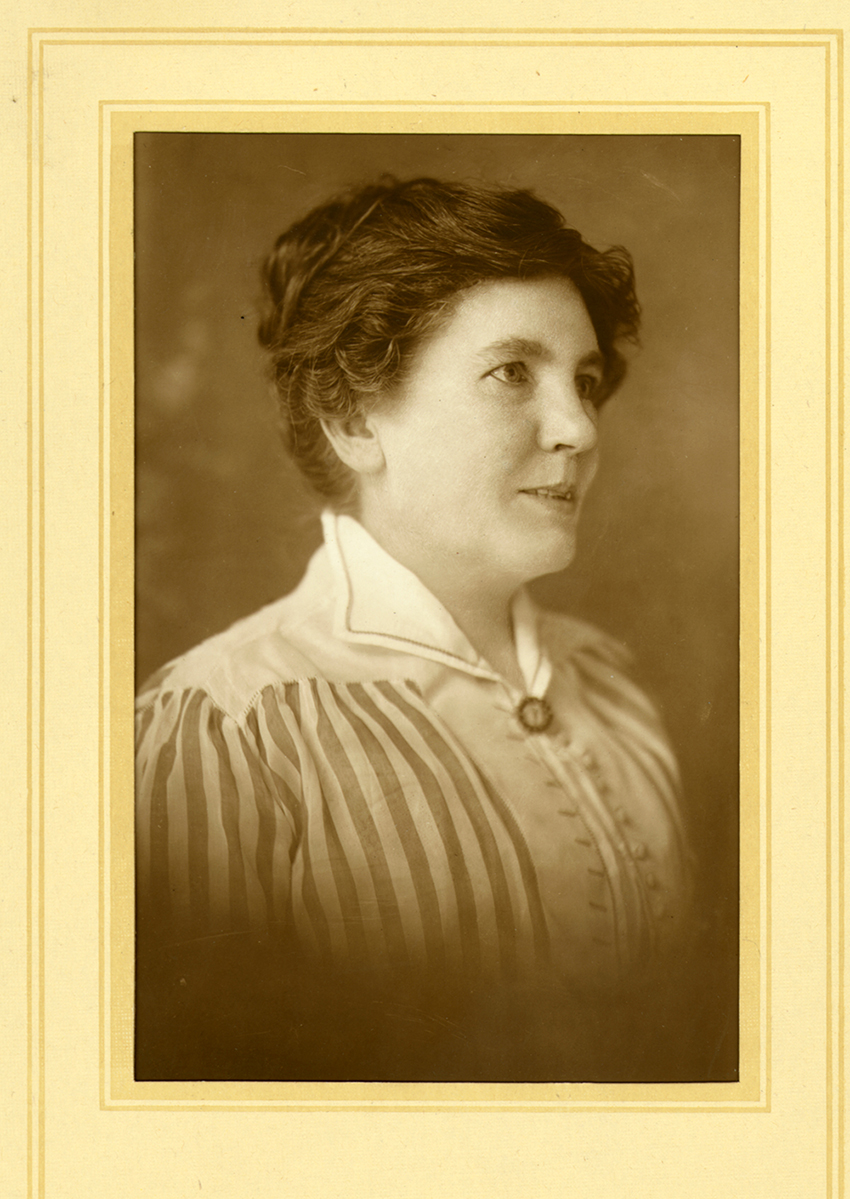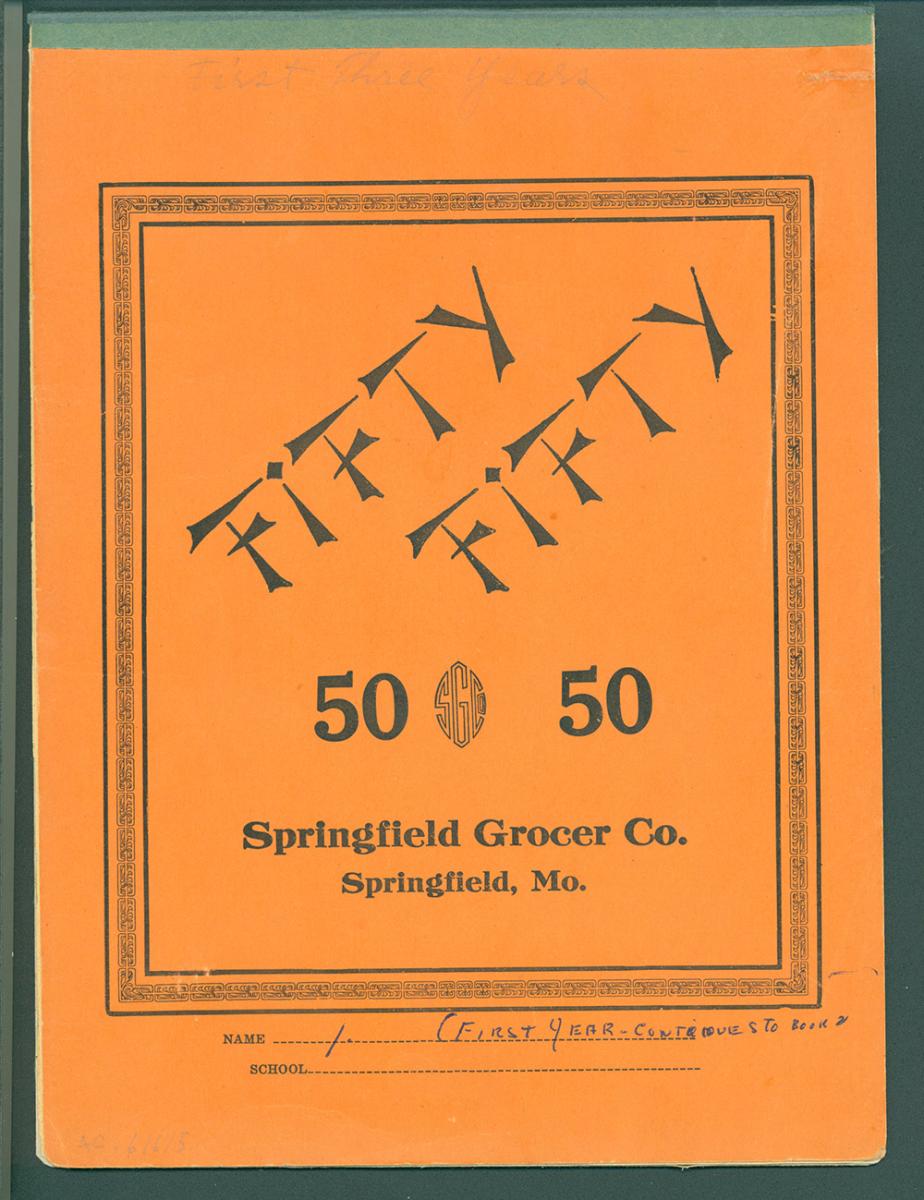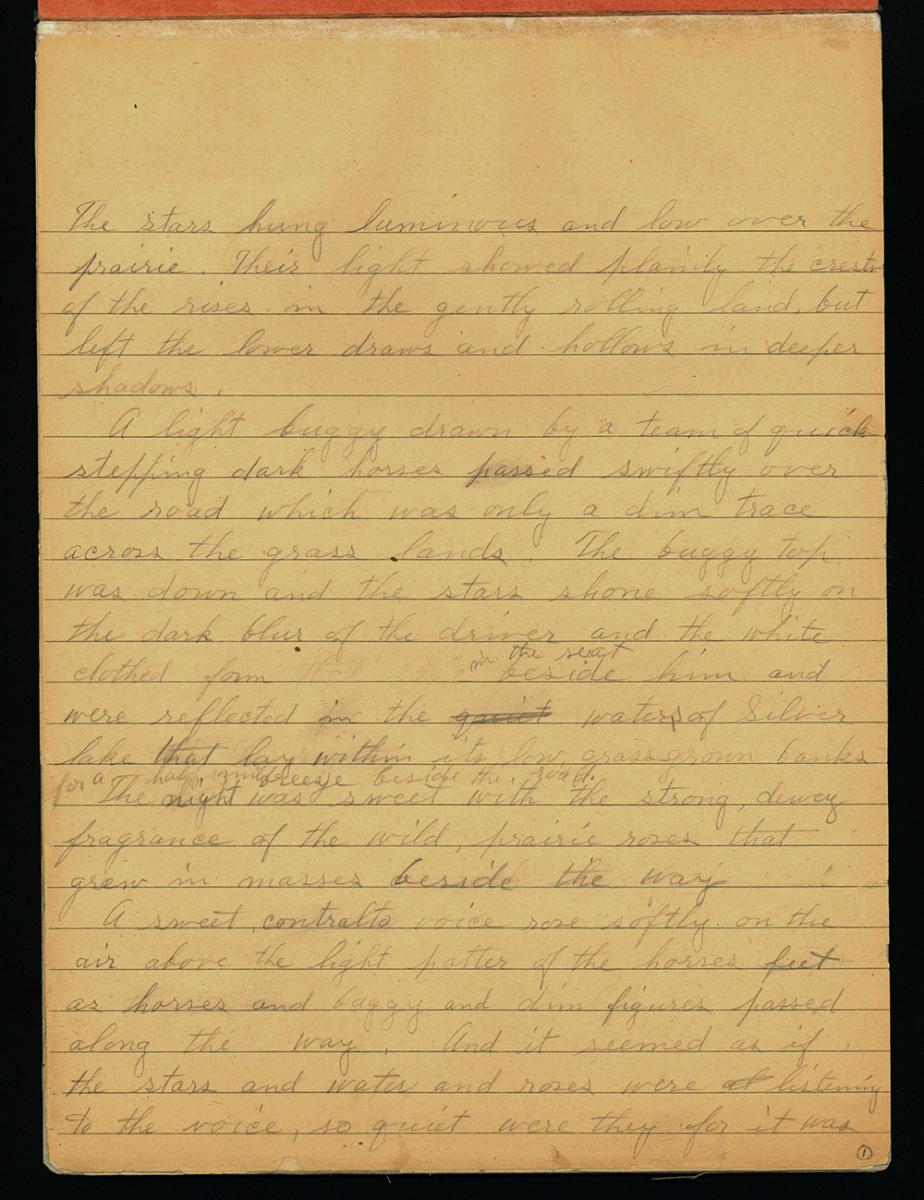
Laura Ingalls Wilder Papers at the Hoover Library
Fall 2005, Vol. 37, No. 3 | Pieces of History
For more than 70 years, generations of children have delighted in the “Little House” series of books. Eight books, published between 1932 and 1943, describe life on the American frontier from the perspective of a little girl named Laura Ingalls Wilder. Though fiction, the books are based on Wilder’s experiences growing up in Wisconsin, Kansas, Minnesota, and Dakota Territory.
The ninth and final book, The First Four Years, was published posthumously in 1971. An original manuscript of this book, written in pencil in three notebooks, is in the Herbert Hoover Library in West Branch, Iowa. The story covers the early years of Laura’s marriage to Almanzo Wilder and the birth of their daughter, Rose.
Rose grew up to become a widely published author and journalist. In the 1930s, she also became her mother’s editor and collaborator on the “Little House” books, typing up the manuscripts and revising them for publication. The unedited manuscript for The First Four Years was discovered among Lane’s papers after her death in 1968 (Wilder had died in 1957). Because it is the only book of the series that neither Wilder nor Lane reworked, its tone is different from its predecessors.
Rose Wilder Lane was also the first biographer of Herbert Hoover, and her work on The Making of Herbert Hoover (1919) led to a 40-year friendship with the future President. In the 1970s, a biographer of Rose Wilder Lane urged the Hoover Library to contact Lane's heir, Roger Lea McBride, to augment the library's collection of Hoover-Lane correspondence. Eventually, McBride decided to donate all of Lane's papers, including materials stemming from her long collaboration with her mother. The popularity of the “Little House” books has made the Lane Papers one of the library’s most heavily used collections.
Diligent researchers can find threads of Wilder’s life in other National Archives records as well. In articles and in workshops, Archives staff have used the “Little House” books as an example of how to use an assortment of federal records to research family and local history. Traces of the Ingalls and Wilder families and their experiences appear in homestead, census, post office, and even weather records.
Wilder may have embellished some of her childhood memories, but records in the National Archives can help us sort fact from fiction.


